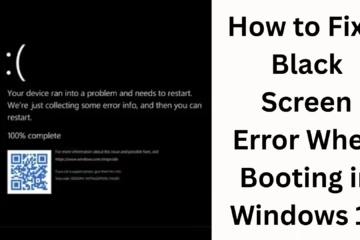What is the HDO Box App?
HDO Box App is a popular movie and web series streaming application, specifically designed for users who want to watch the latest Hollywood, Bollywood, and South Indian movies and web series on a single platform. The biggest advantage of this app is that it offers HD quality, fast streaming, and a user-friendly interface.
Although this app was created for Android devices, due to the increasing demand for watching content on a larger screen, people now want to download and use it on their PC or Laptop.
Why use the HDO Box App on PC?
There are several significant advantages to running the HDO Box App on a PC:
Large screen experience – The enjoyment of movies and web series is multiplied
Better sound quality – Cinematic experience with headphones or speakers
Stable internet connection – Less buffering compared to mobile
Convenience for long viewing sessions – No battery concerns
For this reason, thousands of users are searching for the HDO Box App for PC Download today.
HDO Box App for PC – Key Features
Before using the HDO Box App on your PC, it’s important to understand its main features:
A large collection of the latest movies and web series
HD and Full HD streaming support
Subtitle support – in multiple languages
Simple and clean interface
Fast servers – smooth playback
No sign-up required
All these features make it an excellent option for PC users as well.
How to Download the HDO Box App on PC?
Since an official PC version of the HDO Box App is not available, we need to use an Android Emulator to run it.
Step 1: Download an Android Emulator
First, install a reliable emulator on your PC or Laptop:
BlueStacks
Nox Player
LD Player
These emulators are available for both Windows and Mac.
Step 2: Install the Emulator
After downloading:
Open the Emulator’s `.exe` file
Follow the on-screen instructions
Allow the installation to complete
Step 3: Download the HDO Box APK
Now you need to download the latest APK file of the HDO Box app. Always remember:
Only download the latest version
Avoid unknown or suspicious websites
Step 4: Install the APK in the Emulator
Open the Emulator
Click on the “Install APK” option
Select the downloaded APK file
Allow the installation to complete
Step 5: Run the HDO Box App on your PC
After installation:
Open the HDO Box app from the Emulator’s home screen
Choose your favorite movie or web series
Enjoy streaming on the big screen
System Requirements for HDO Box App
For a smooth experience on your PC, the following system requirements are necessary:
Operating System: Windows 7/8/10/11 or macOS
RAM: At least 4GB (8GB is better)
Processor: Intel / AMD Dual Core or higher
Storage: 5GB free space
Internet: High-speed broadband connection
Content Available on HDO Box App
There is no shortage of content on the HDO Box app:
Hollywood Movies (Latest & Classic)
Bollywood Movies
South Indian Movies (Hindi Dubbed)
Web Series (Netflix, Prime, Disney+ type content)
TV Shows
Due to this variety, this app is rapidly becoming popular among PC users.
Advantages of the HDO Box App
Free premium content
Frequently updated library
User-friendly interface
Minimal ad experience
Fast streaming and less buffering
Disadvantages of the HDO Box App
Although this app is quite useful, it also has some limitations:
Not available on the Google Play Store
May require more system resources to run on an emulator
Lack of official support
Nevertheless, with the right setup, the experience on a PC is quite good. Essential Tips for Using the HDO Box App on PC
Always use the latest APK version
Keep your emulator updated
Use antivirus and VPN correctly
Do not grant unnecessary permissions
Conclusion
If you are looking for the HDO Box App on PC (Latest Version Download), using it through an Android emulator is the best and safest way. The larger screen, better sound, and uninterrupted streaming experience make it a great option for movie and web series lovers. By following the correct steps, you can easily enjoy the full features of the HDO Box App on your PC or laptop.
Want to grow your website organically? Contact us now
HDO Box App on PC – Frequently Asked Questions (FAQ)
Question 1: What is the HDO Box App?
The HDO Box App is a popular movie and web series streaming application that offers a large collection of Hollywood, Bollywood, South Indian, and other web series. This app is particularly known for its HD quality streaming.
Question 2: Can the HDO Box App be downloaded on a PC?
Yes, there’s no official version available directly for PC, but you can easily run it on PC using an Android emulator (such as BlueStacks, Nox Player, or LD Player).
Question 3: Why is an emulator necessary to run the HDO Box App on a PC?
Because the HDO Box App is an Android-based app. To run Android apps on a PC, an emulator creates a virtual Android environment, allowing the app to function properly.
Question 4: Is the HDO Box App safe to use on a PC?
If you download the latest APK file from a trusted source and keep the emulator updated, it’s generally considered safe to use. For added security, it’s best to use an antivirus and VPN.
Question 5: Is the HDO Box App free or paid?
The HDO Box App is completely free. There’s no subscription or sign-up required.
Question 6: What kind of content is available on the HDO Box App?
You can find the following on the HDO Box App:
Latest and classic movies
Web series
Hollywood and Bollywood content
Hindi-dubbed South Indian movies
TV shows
Question 7: Does the HDO Box App support subtitles?
Yes, the HDO Box App supports subtitles, allowing users to watch content in their preferred language.
Question 8: Why does the HDO Box App run slow on PC?
The main reasons for this could be:
Low RAM or an outdated processor
Outdated version of the emulator
Slow internet connection
For better performance, use at least 4GB of RAM, an updated emulator, and high-speed internet.
Question 9: Can the HDO Box App run on Windows 11?
Yes, the HDO Box App can be easily run on Windows 11, provided your system meets the emulator’s minimum requirements.
Question 10: How to update to the latest version of the HDO Box App?
To get the latest version, you must:
Uninstall the old APK
Download the new HDO Box App Latest APK
Reinstall it in the emulator
Question 11: Does the HDO Box App work the same on both mobile and PC?
Yes, the features are almost identical, but the experience is better on PC due to the larger screen and better sound.
Question 12: What is the biggest advantage of the HDO Box App?
Its biggest advantage is free HD quality content, no account required, and an easy-to-use interface.
Question 13: Can I download movies from the HDO Box App?
Some versions offer offline download options, but this varies depending on the version.
Question 14: What are the alternatives to the HDO Box App?
If the HDO Box App doesn’t work, you can use other streaming apps as an alternative, but the HDO Box App’s content collection is considered to be quite large and updated.
Question 15: Who is the HDO Box App best suited for on PC?
This app is best for users who want to watch movies and web series for free on the big screen, without any subscription.












